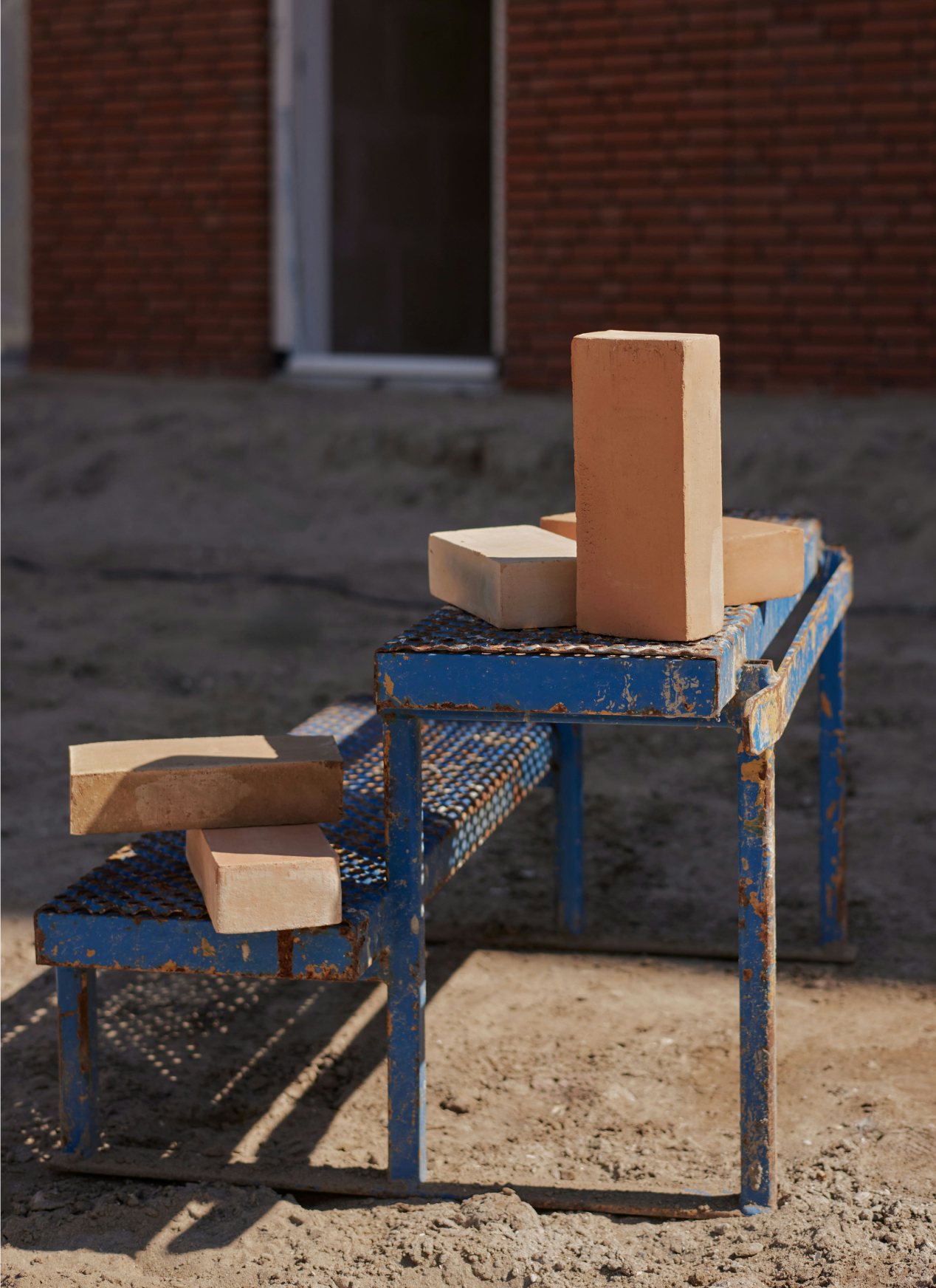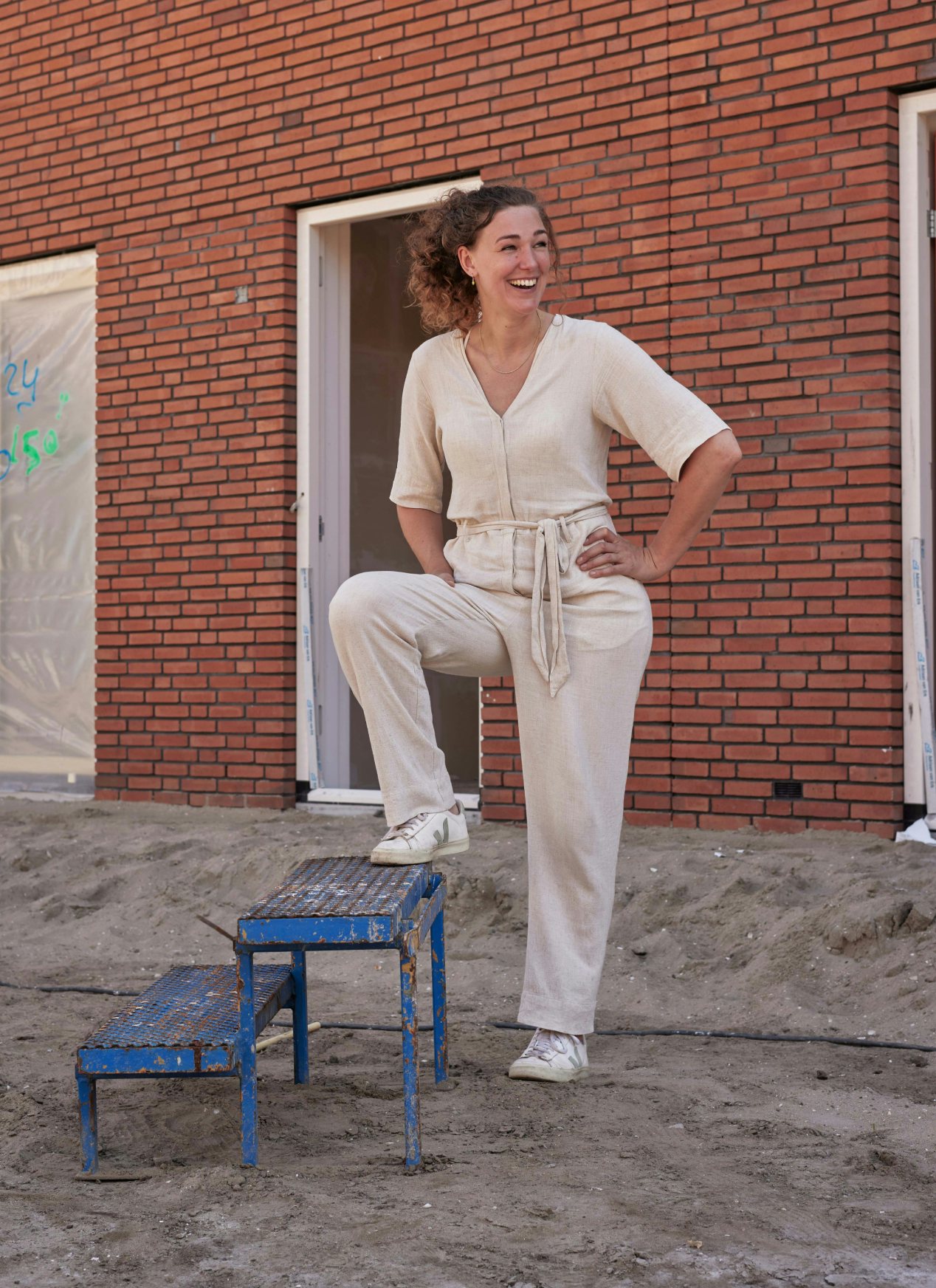
Claybens
Emy Bensdorp
Emy Bensdorp está a desenvolver uma técnica para transformar solo argiloso contaminado por PFAS em tijolos 100% limpos. O calor do processo de cozedura decompõe os químicos tóxicos, criando um produto que pode ser amplamente utilizado na construção das nossas casas. Uma resposta a um desafio complicado que, até agora, não tinha solução.
Os PFAS são químicos sintéticos utilizados desde a década de 1950. Estas substâncias são utilizadas numa vasta gama de produtos, dado que são repelentes à água, à gordura e à sujidade. No entanto, os resíduos tóxicos e não degradáveis resultantes da sua produção acabam por chegar ao nosso ambiente natural e às cadeias alimentares. Nem o governo nem as empresas encontraram, até agora, uma solução adequada para este problema.
Falámos com a Emy sobre o problema dos PFAS e sobre como ela chegou à conclusão de transformar solo argiloso contaminado em tijolos, que agora pretende introduzir no mercado.

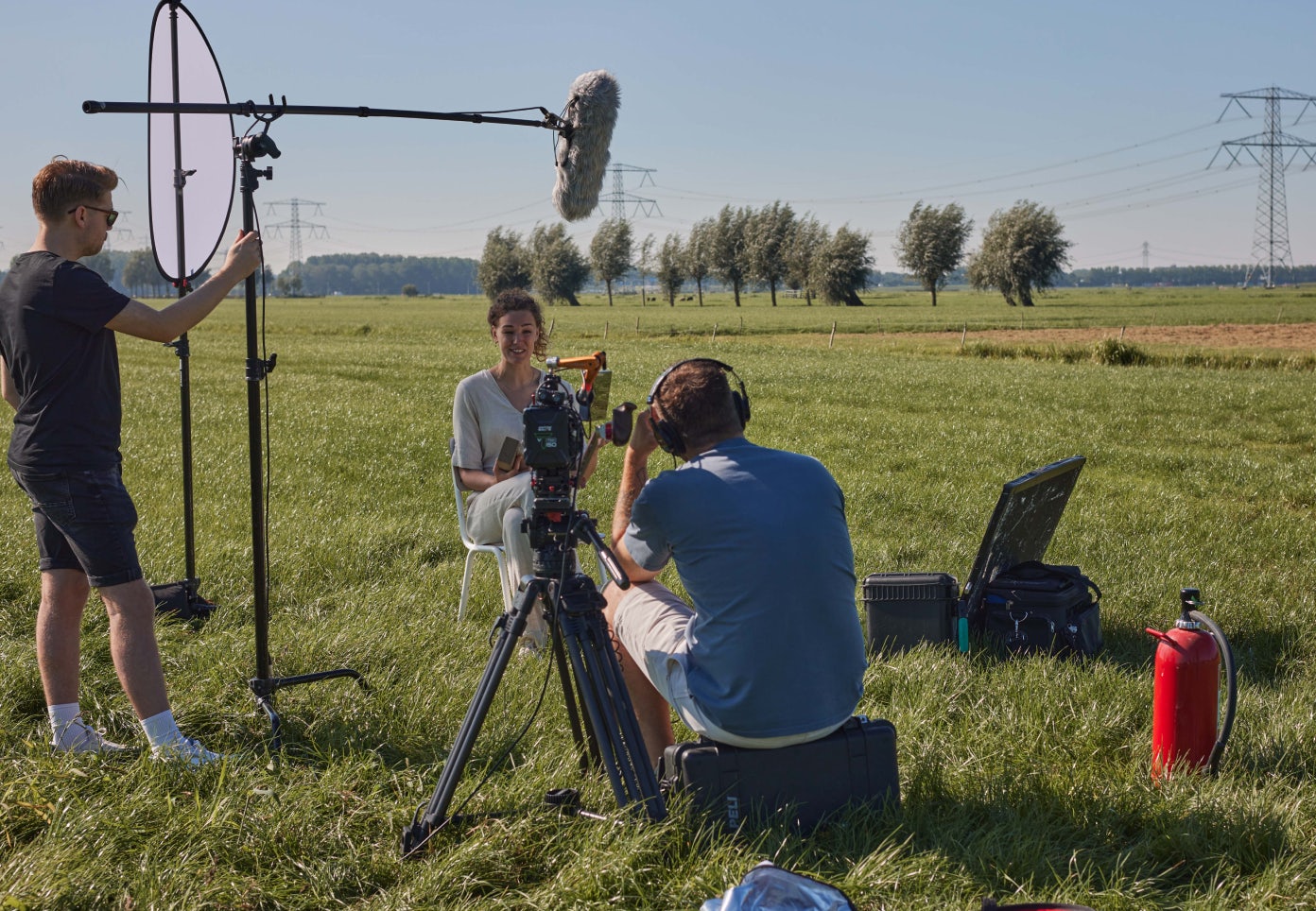
Fotografia: Anouk Moerman
Filme: Blickfänger
Olá, Emy. Gostaria de partilhar connosco o que a motiva e como vê o seu papel neste mundo?
Sou uma pessoa naturalmente curiosa e adoro aprofundar-me nas questões que me interessam. Gosto de estabelecer conexões entre várias coisas e de tentar tornar o mundo mais bonito e sustentável. Gosto da série "Planet Earth", com todos aqueles sistemas naturais em perfeita sintonia, mas também gosto de observar como nós, seres humanos, os destruímos. Os seres humanos desequilibram as coisas e, enquanto designer, tento encontrar soluções criativas que resolvam os problemas que criámos. Após estudar Psicologia, percebi que esse é o objetivo do design. Esta descoberta atraiu-me tanto que decidi frequentar a Design Academy Eindhoven.
Queres reparar algo que as pessoas estragaram? Podes falar-nos sobre o problema específico em que pretendes fazer a diferença?
Em 2019, o PFAS esteve muito presente nas notícias. Descobriu-se que estava presente em todo o lado e que podia causar doenças graves. O PFAS é um produto químico sintético em uso desde a década de 1950. É utilizado em produtos industriais e de consumo, como roupas impermeáveis, frigideiras e espumas de combate a incêndios.
Compreendi que os seres humanos introduziram esta substância no mundo por uma razão. Esses tecidos cumprem muito bem a sua função: são resistentes ao calor, repelem a água e duram muito tempo. Na verdade, duram demasiado tempo, ou seja, milhares de anos. Nunca pensámos no que acontece a estas substâncias quando deitamos fora o produto. Ao longo dos anos, acabaram por ir parar ao ambiente. Os produtos químicos PFAS são muito resistentes e não se decompõem naturalmente. Agora, estão presentes em toda a parte na nossa água e nos nossos solos. Já não conseguimos livrar-nos deles e, além disso, são extremamente prejudiciais para o ambiente e para a nossa saúde.
A nossa intenção é fabricar 50 000 tijolos, o que corresponde aproximadamente à quantidade necessária para uma moradia geminada.
Percebeu então que existem substâncias PFAS tóxicas em quase todos os lugares à nossa volta. Que solução encontrou?
Quando ouvi falar do problema das PFAS, comecei a fazer algumas pesquisas e o solo argiloso chamou-me a atenção. Ao contrário do solo arenoso, este tipo de solo não pode ser lavado e, devido à sua densidade, retém grandes quantidades de PFAS. Foi assim que começou o meu processo de design, que envolveu a recolha de informações até tudo se encaixar.
Durante o meu trabalho como designer, adquiri alguma experiência com cerâmica. A cerâmica é feita cozendo argila a 1000 graus num forno especial; por isso, quando li que os produtos químicos PFAS se tornam inofensivos a estas temperaturas, percebi tudo.
Ao aquecer solo argiloso contaminado com PFAS a altas temperaturas, quebra-se a ligação C-F dos produtos químicos, tornando-os inofensivos, ao mesmo tempo que é possível cozer um tijolo.
There is so much PFAS captured in clay soils globally and my goal is to eliminate those chemicals completely.
Pode falar-nos sobre o setor em que entrou naquela época? Como é o mundo da construção civil?
Após o desenvolvimento do produto, comecei a aprofundar os meus conhecimentos sobre a indústria dos tijolos. Queria compreender como funcionava a produção em massa de tijolos para poder integrar o meu produto nesse sistema. A indústria dos tijolos é uma bela indústria tradicional, em que o artesanato ainda é valorizado.
As máquinas são concebidas para produzir em larga escala e o trabalho é realizado por pessoas com muita experiência e amor pela sua profissão. Também existem questões de sustentabilidade na indústria dos tijolos.
Por exemplo, a produção de uma pedra requer muita energia, mas o produto dura muito tempo. Trata-se de um setor que pensa a longo prazo, mas que também precisa de acompanhar os novos desenvolvimentos.
Ao substituir as argilas industriais convencionais por solo argiloso contaminado com PFAS, todos saem a ganhar. Criamos uma aplicação para um fluxo residual significativo, limpamos o PFAS do nosso ambiente e damos à indústria dos tijolos a oportunidade de produzir um produto muito sustentável.
No entanto, deparei-me com um problema: onde é que devemos intervir na cadeia? Afinal, a indústria de tijolos não é a «proprietária do problema» nem a única responsável pela sua resolução.
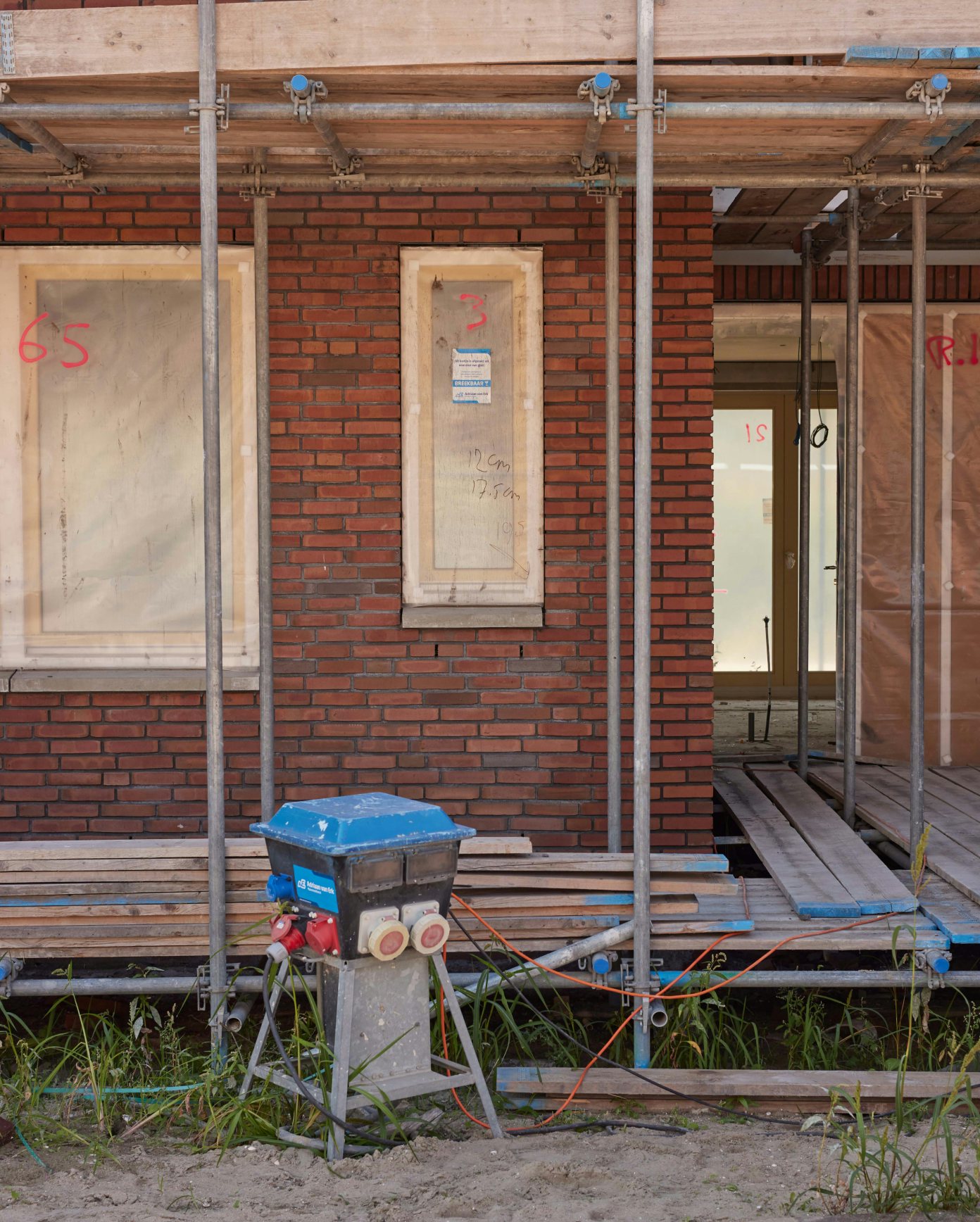
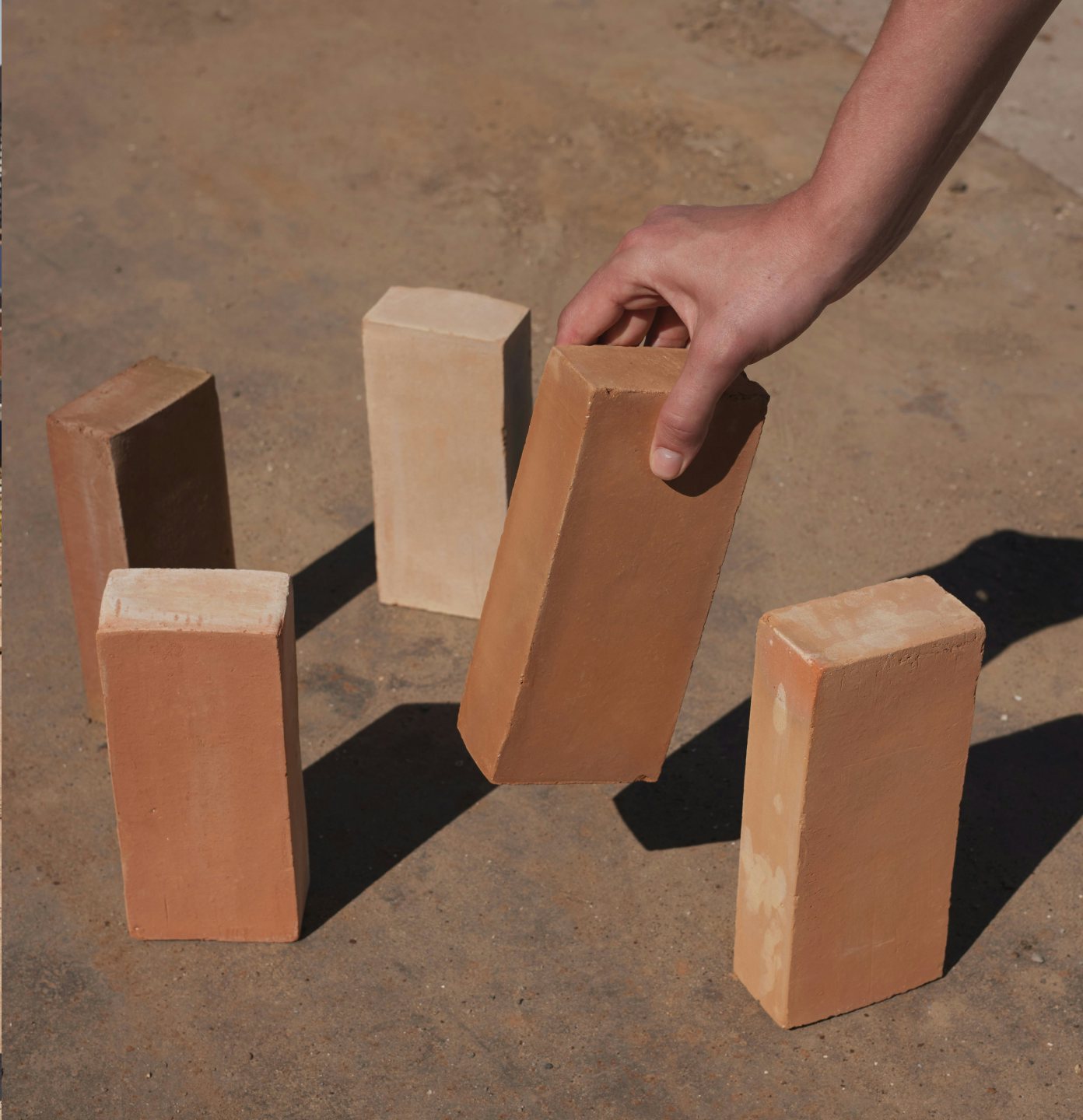
Está a dizer que a indústria de tijolos não é a responsável pelo problema. Quem é, então? E que partes é que precisam de ser reunidas?
Os proprietários de terrenos com solo argiloso contaminado com PFAS têm um problema real. A maioria dos produtos químicos PFAS no nosso ambiente é libertada durante a produção industrial e a utilização de agentes PFAS, por exemplo, na espuma de combate a incêndios. Isso pode acontecer praticamente em qualquer lugar. Nesta fase, o problema só se torna ativo quando o solo precisa de ser escavado ou quando os níveis de PFAS são tão elevados que se infiltram na área circundante. O solo argiloso removido durante este tipo de limpezas não tem atualmente qualquer utilidade ou destino. A única opção é armazená-lo num depósito. O que, obviamente, não é uma solução, pois o problema apenas desaparece. Por isso, agora, com a Claybens, estou a tentar ligar estes "proprietários problemáticos" à indústria de tijolos.
Como vai convencer os proprietários de terras e os produtores de tijolos? Onde reside o poder da Claybens?
Acho muito importante que os tijolos que produzimos sejam funcionais. Há uma grande quantidade de PFAS retida nos solos argilosos em todo o mundo e o meu objetivo é erradicar por completo esses produtos químicos. Só é possível fazê-lo se pensarmos em grande. É por isso que optei conscientemente por não alterar a forma do tijolo. Quero que os meus tijolos sejam produzidos de forma tão rápida e fácil quanto possível dentro do processo industrial existente. Além disso, quero que as empresas de construção, os empreiteiros e os arquitetos não tenham de adaptar as suas formas de trabalhar para integrarem o meu tijolo em vez de um tijolo "normal". A minha missão é eliminar o PFAS, não fabricar o tijolo mais bonito da Holanda, embora, enquanto designer, por vezes me sinta tentado a fazê-lo.
A sua missão é limpar o solo contaminado com PFAS e transformá-lo em tijolos em grande escala. No entanto, na prática, é muitas vezes difícil fabricar um produto 100% sustentável. Que dilemas enfrenta?
Trabalho na Claybens há três anos. Por vezes, o progresso é lento, pois cada passo deve ser dado com cuidado e atenção. A solução que proponho é sustentável, mas a respetiva matérias-primas não o são. Sempre que se entra num terreno com muito solo contaminado, são dadas instruções oficiais: não é permitido sentar-se no chão nem comer nada que venha do solo; não se podem comer as folhas nem beber a água dos riachos. Isto serve sempre como um bom lembrete de que se trata de uma substância perigosa.
Trabalhar com toxinas pesadas requer cautela e é necessário tomar todas as medidas corretas. Além disso, a produção de tijolos em escala industrial é um processo importante, no qual a incorporação de uma nova matériaprima pode ser uma tarefa bastante complexa. Por vezes, pode ser difícil supervisionar todo o processo, pelo que o divido em etapas separadas, com base nos Níveis de Prontidão Técnica. Ao trabalhar de nível em nível, mantenho o controlo e garantimos continuamente a qualidade.
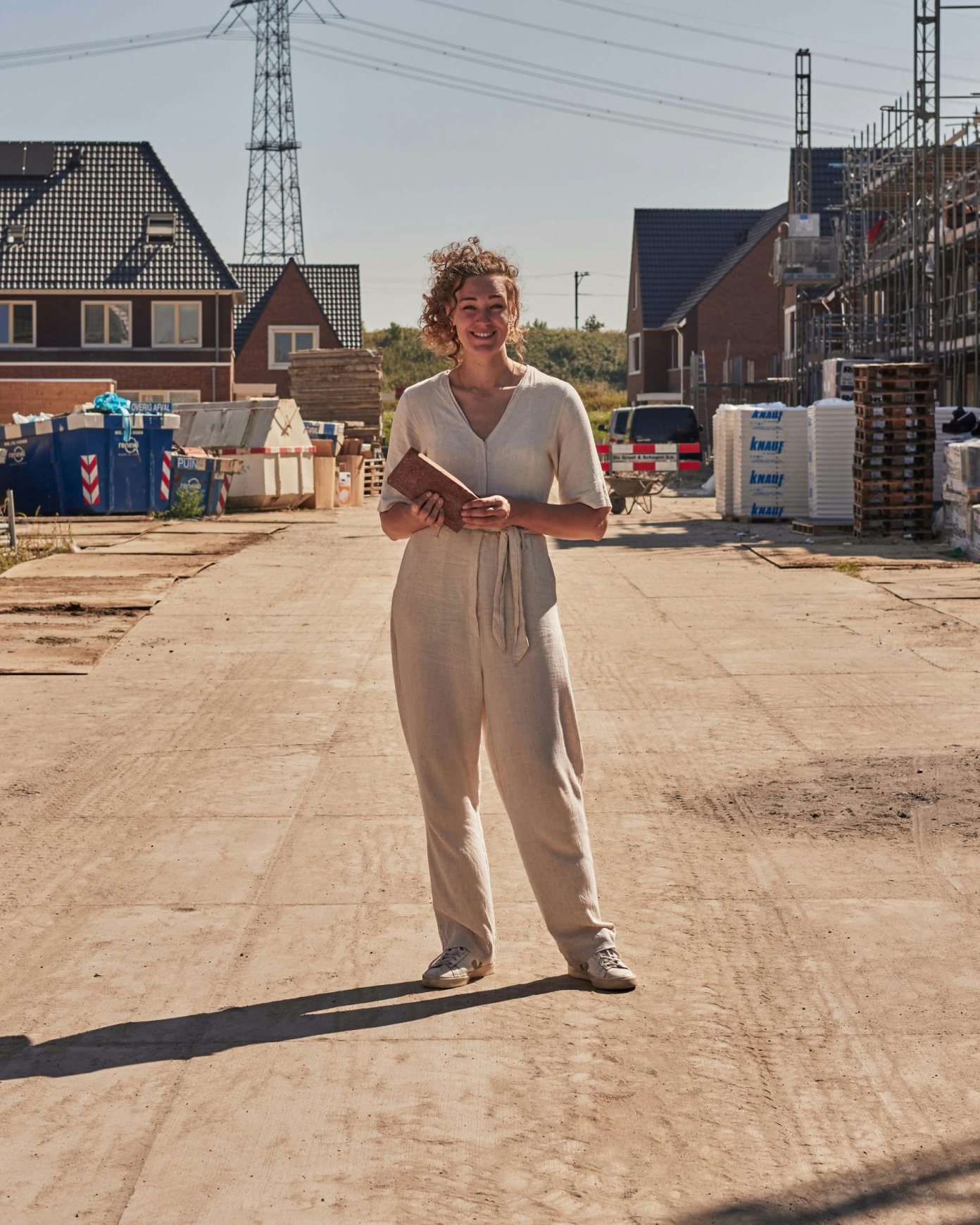
Tem feito progressos significativos. Em que fase de desenvolvimento se encontra atualmente a Claybens? O produto já é comercialmente viável e está disponível no mercado?
O nosso próximo passo é passar da escala laboratorial para a prática, em colaboração com um fabricante de tijolos. Os tijolos ainda não estão disponíveis, mas estamos a trabalhar arduamente para que isso aconteça. Alcançámos bons resultados em laboratório e esperamos obter o mesmo sucesso em escala industrial, mas a prova está no pudim. Assamos tijolos que depois trituramos para testar a presença de PFAS, tendo também medido os gases de combustão. Atualmente, existem dois projetos-piloto ativos em que estamos a realizar esses testes em diferentes tipos de solo argiloso.
O produto saiu do laboratório e já existem projetos de teste em curso. Que futuro antevê?
Estão previstos testes em larga escala para o próximo ano. A nossa intenção é fabricar 50 000 tijolos, o que corresponde aproximadamente à quantidade necessária para uma moradia geminada. Estou muito curioso para ver os resultados. Quando esta fase também for concluída com sucesso, estaremos prontos para instalar as linhas de produção e iniciar o processo de certificação. Poderemos então iniciar um primeiro projeto em grande escala, no qual poderemos transformar o solo argiloso contaminado com PFAS num produto utilizável e limpo.
Juntos, podemos transformar os solos contaminados com PFAS de um fardo num recurso e usá-los para construir belas casas!
Qual é a mensagem mais importante que pretende transmitir ao mundo?
Os PFAS são um conjunto de substâncias químicas tóxicas que, mais cedo ou mais tarde, teremos de combater. A consciencialização sobre este assunto está a aumentar e quase todos os dias é possível ler nas notícias algo sobre o PFAS. Aplicando os princípios do design, desenvolvi uma solução que permite a descontaminação de solos argilosos contaminados com PFAS, estabelecendo uma ligação entre as indústrias do solo e do tijolo. No entanto, a transição do design e dos testes para o mundo real requer um esforço conjunto. Das indústrias do solo, da construção e do tijolo, bem como do governo. Juntos, podemos transformar os solos contaminados com PFAS de um fardo num recurso e usá-los para construir casas bonitas!
Instagram: @emy_bensdorp
